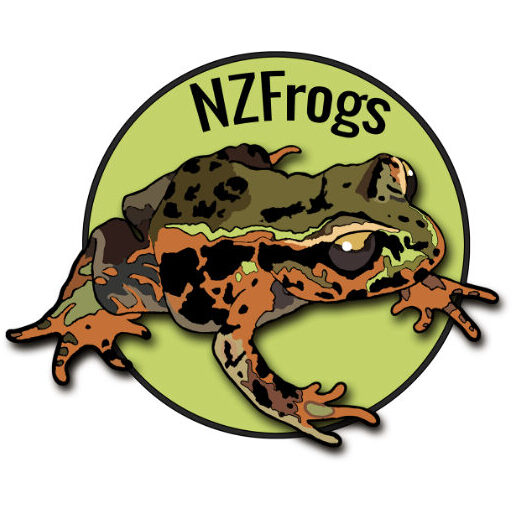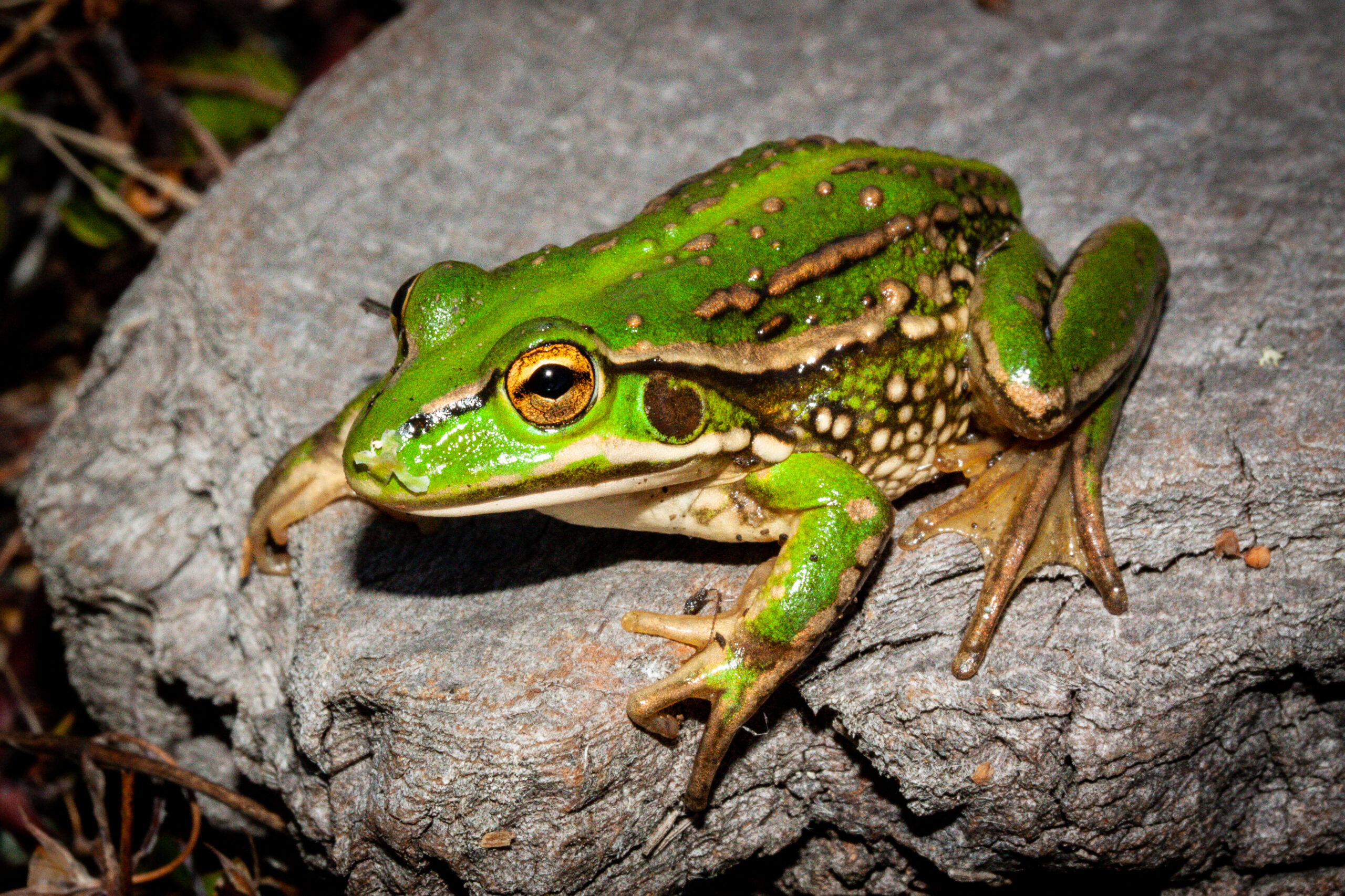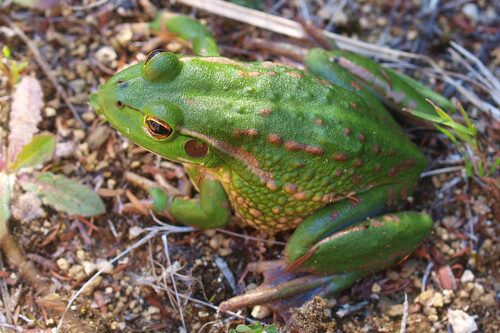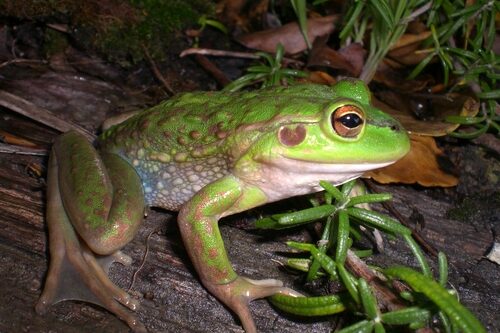The southern bell frog, also known as the growling grass frog in Australia, Ranoidea raniformis (previously Litoria raniformis), is the largest introduced frog in New Zealand. Compared to the green and golden bell frog, the southern bell frog has a lot more warts and a distinct pale-green dorsal stripe. It also tends to have less gold colouring.
The southern bell frog was introduced to New Zealand in the late 1860s from Tasmania by the Canterbury Acclimatisation Society. They have been very successful in New Zealand and can now be found throughout the South and North Islands, from the coast to alpine areas.
This species is not threatened in New Zealand but its population fluctuates due to the impacts of Chytrid fungus.

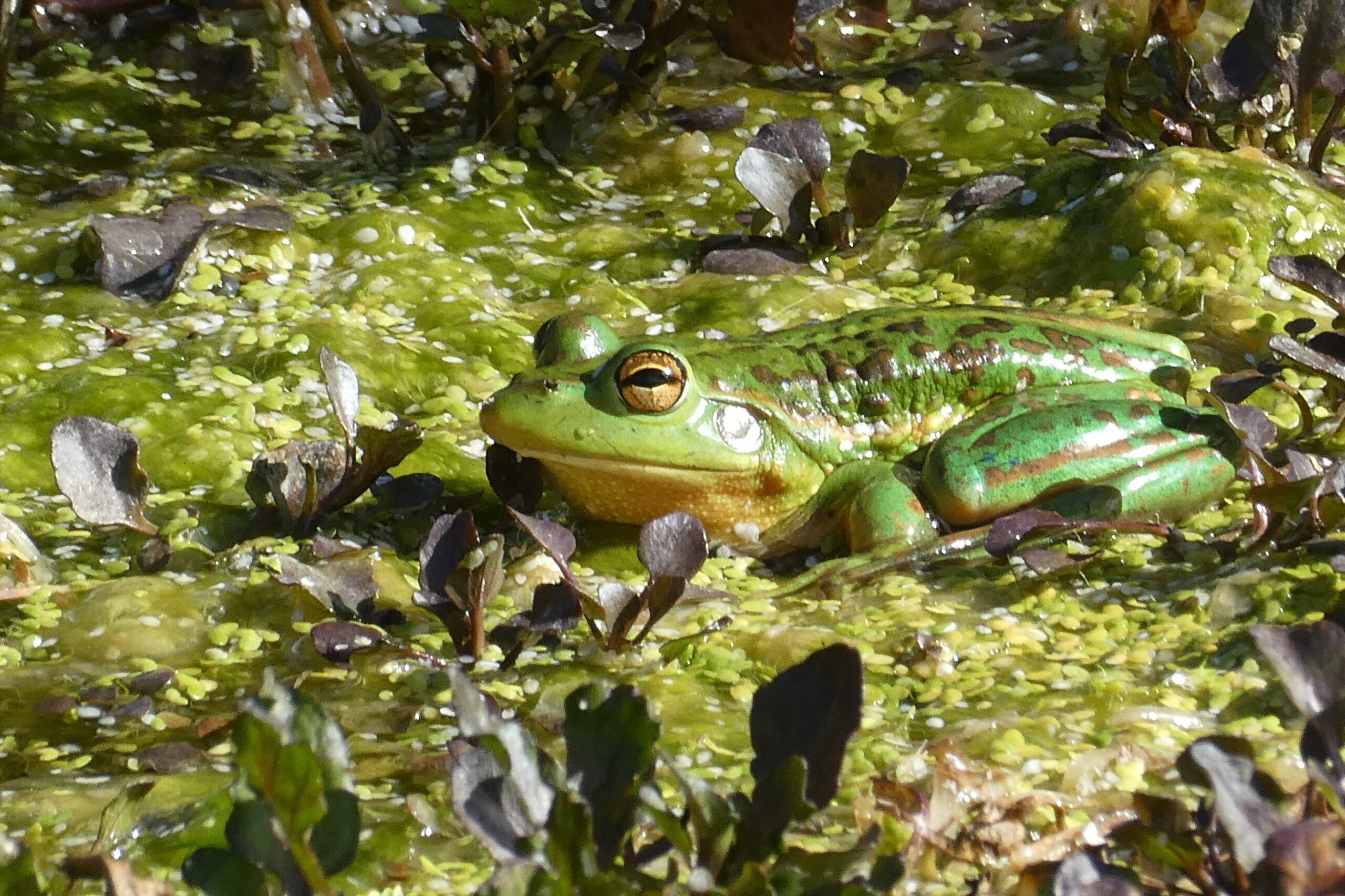
In their native distribution in Australia, they are classified as Endangered by the IUCN. Adults are generalist feeders and consume a wide variety of food types. Tadpoles begin feeding on algae and detritus but integrate small invertebrates into their diet or cannibalise other tadpoles as they grow larger.
Description
These frogs are similarly coloured to the green and golden bell frog but generally have more dark brown or black blotches on the back distinctively. The tympanum (eardrum) is quite distinct and easily visible, this characteristic alone separates this species from our native Leiopelma species (which lack an eardrum). Southern bell frogs often have a warty back and distinctively, there is always a pale green stripe down the middle of their back. The back of their thighs and groin area are bright blue to turquoise and the belly appears granular. Only the back feet are webbed and there are no suckers on the ends of their toes. During the breeding season males have darkened “nuptial” pads on their front toes to help with amplexus (mating).
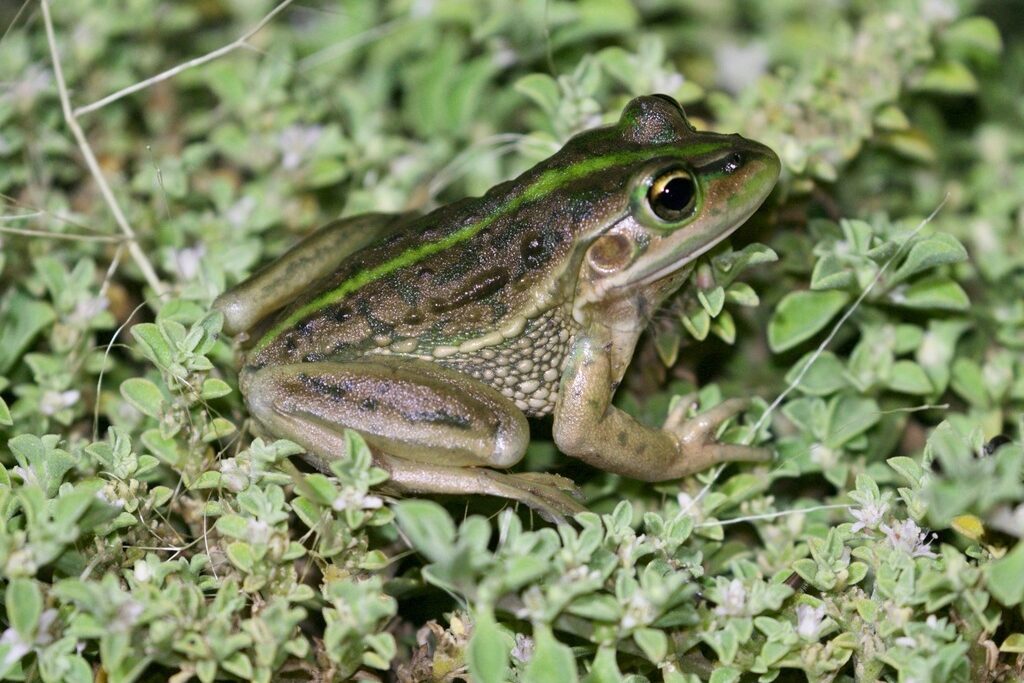
Image by ©Scott Baker
How big are these frogs?
Frog body size is generally measured as snout to vent length (SVL). SVL is the distance from their snout (tip of their nose) to their vent (bottom). Males are smaller than the females with an average SVL of about 55-65 mm, females can be larger with a SVL 75-100 mm.
Call
Their call is similar to the green and golden bell frog but is not as drawn out. It is best described as crawcrocrocrocrok (in Australia this frog is also known as the growling grass Frog). Males often call while floating in water. Listen to their call here on the Australian FrogID page.
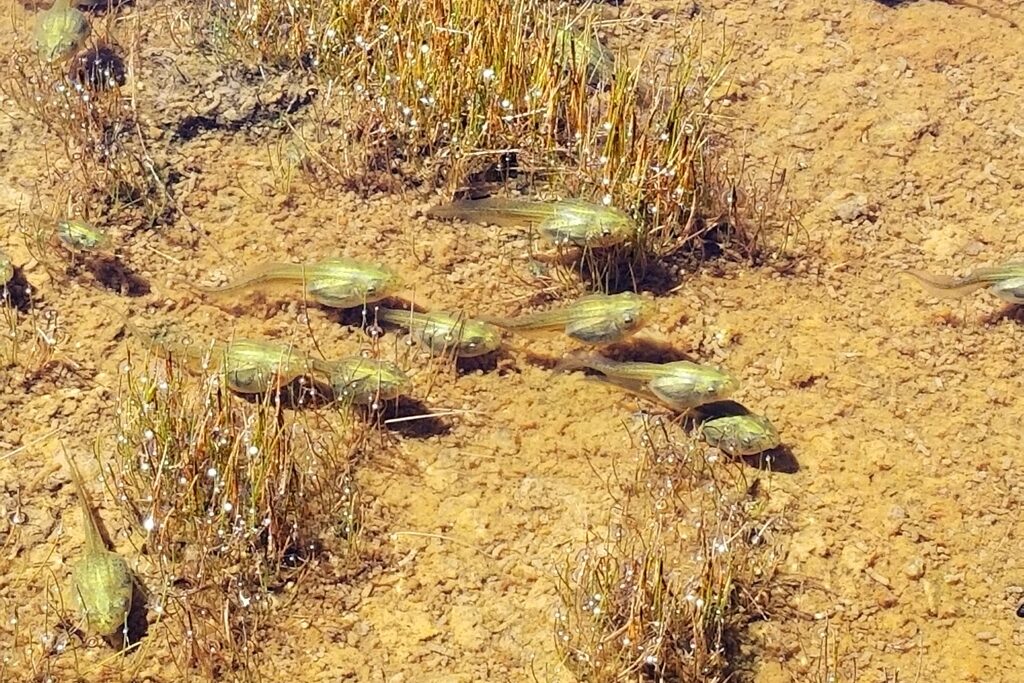
Image by ©ktayneese
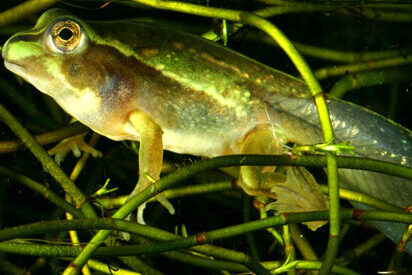
Image by ©Amphibian Research Centre
Breeding
Like green and golden bell frogs, southern bell frogs prefer to breed shallow water bodies, in full sunlight and free of aquatic predators such as mosquito fish. However, southern bell frogs seem to prefer permanent lakes, swamps and dams with still water. They enjoy basking in the sun and are active during the day. Females may lay between three and ten thousand eggs in a floating gelatinous mat, which sinks after 6-12 hours. The eggs hatch into black tadpoles after about two days, and metamorphosis occurs about two months later.
References
Burns, Rhys J., et al.(2017) Conservation status of New Zealand amphibians. Wellington: Publishing Team, Department of Conservation, 2018.
Burns, R. J., et al,. (2018). Conservation status of New Zealand amphibians, 2017. Wellington: Publishing Team, Department of Conservation.
Cree, A. (1984). Breeding biology, respiration, and larval development of two introduced frogs (Litoria raniformis and L. ewingi). New Zealand Journal of Zoology, 11(2), 179-187.
Hero, J., Gillespie, G., Lemckert, F., Littlejohn, M., Robertson, P., Brereton, R. & Brown, P. 2004. Litoria raniformis. The IUCN Red List of Threatened Species 2004.
Purdie, S. (2022). A naturalist’s guide to the reptiles & amphibians of New Zealand (pp. 157). John Beaufoy Publishing.
Bishop, P. (2008). Bell frog populations in New Zealand-good news or bad news?. Australian zoologist, 34(3), 408-413.
Pyke, G. (2002). A review of the biology of the Southern Bell Frog Litoria raniformis (Anura: Hylidae). Australian Zoologist, 32, 1, 32-48.
